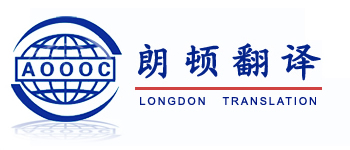Opinion: China’s Commercial Aerospace Dream Edges Closer To Reality
观点:中国商业航天梦即将成为现实
China’s commercial aerospace ambition has long been known, but a few recent milestones are bringing it closer to realization.
众所周知中国一直在雄心勃勃地推进航天商业化,最近中国取得的进展正在将这一梦想转为现实。
Since the establishment of Avic 1 and Avic 2 in 1999, which really marked the beginning of China’s push into the commercial aerospace market, there has been no doubt about China’s intent and the direction it wants its industry to take. But the pace at which it would achieve this ambition was less uncertain. Almost 20 years on, things have become much more clear, and there is now little doubt that China is well on its way to succeeding where several other countries have failed in becoming a full-fledged player in the large commercial aircraft manufacturing sector, with the potential to disrupt the long-standing duopoly of Airbus and Boeing.
1999年中国航空工业第一、第二集团公司(之后两者合并为中国航空工业集团公司)的成立标志着中国开始进军商业航天领域,显示了中国迈向这一行业的绝心与意志。但实现这一雄心的脚步并不那么平坦。20年之后毫无疑问中国已经成为了大型商用航天领域的成熟玩家,将其他几国远远甩在身后,并有望打破空客和波音的长期垄断。
To be fair though, no other country has ever had China’s assets: a stable government with an unequivocal, long-term financial and strategic commitment and a huge domestic—hence mostly captive—market. According to market forecasts, China’s domestic air traffic is expected to almost quadruple between now and 2036 to reach 1.6 billion passengers, which will be more than twice the U.S.’s domestic traffic by 2036.
实话说没有其他国家能拥有中国那样的优厚研究条件:一个有着长期明确财政支持和庞大国内市场的政府——尽管大部分市场并不自由。市场预计中国国内航空市场将在当前基础上翻四倍,到2036年乘客总数将两倍于美国,达到16亿人次。
And while there is still a long way to go before airplanes designed and made in China compete on the world stage with the likes of the Boeing 737 or Airbus A320, the momentum is there, and the country’s aerospace industry is entering a new phase of development and maturity.
尽管中国在设计制造能与波音737或空客A320媲美的大飞机上仍有很长的路要走,但发展趋势很显著。中国航空工业正走向一个崭新的发展阶段并不断迈向成熟。The first flight of the Comac C919. Credit: Comac
Most observers would think the single-aisle Comac C919’s first flight last May (pictured) is illustrative of this, but while it is a key milestone, it does not represent the whole story about what is happening in the industry. Two other events are much more telling.
大多数观察家认为去年五月首飞的单过道C919就是图中这架飞机。尽管这是一项突破性进展,但它并不能完全代表中国航空工业的发展。其他两个例子更有说服力。
The first is the establishment of the Aero Engine Corp. of China (AECC) last year, which consolidates Chinese aero-engine know-how and capabilities, indicating that the indigenous development of aircraft engines is now a strategic priority for China. This focus is even more striking when one realizes that China now has access to rhenium, a rare metal that helps create strong superalloys necessary for the manufacture of high-pressure jet engine turbine blades. Since the 2010 discovery in the Shaanxi province of reserves, which account for 7% of the world’s total, considerable effort has been made to exploit and process this metal. Moreover, a major technological milestone was recently achieved that opens the door for mass production of single-crystal turbine blades, a key component of modern jet engines. It is thus no surprise that one of the cornerstones of the newly established joint Sino-Russian widebody aircraft program is the development of a dedicated, state-of-the-art engine.
一,中国航空发动机集团的成立。去年集团公司通过研发提高了国产发动机的技术水平与续航能力,表明自主开发飞机发动机仍是当前中国的战略重点。当中国获得了铼,一种制造高压喷气发动机涡轮叶片的必须合金材料之后,这一决心更加显著。2010年在陕西发现占世界总储量7%的铼矿后,中国已投入相当大的精力开采并应用这一金属。此外,现代喷气发动机的关键部件——大规模单晶涡轮叶片制造技术也取得了重大突破。新成立的中俄宽体客机项目至此有望用上国产发动机。
The second event of note is Comac’s latest round of financing—it raised 15 billion yuan ($2.3 billion) last month in the form of a 10-year debt investment plan—combined with the memorandum of understanding (MOU) signed in June by Airbus and the National Development and Reform Commission (NDRC). The financing and MOU are intended to help bring about a fully developed, competitive domestic supply chain, the former through the injection of research and development money down the supply chain and the latter through the integration of Chinese suppliers in Airbus’s global supply network. The objective, as outlined in the “Made in China 2025” plan, is for Chinese suppliers to provide 80% of all parts by 2025.
二,7月与空客和国家发改委签署谅解备忘录后,上月份商飞以一份十年期债务投资计划成功融资150亿人民币。融资和签署备忘录旨在帮助形成一个成熟的、有竞争力的国内供应链,前者通过注入研发资金,后者通过整合中国供应商在空中客车的全球供应网络。“中国制造2015”计划中提到,到2025年中国供应商有望能提供80%的飞机零部件。
Taken together, these events and strategic initiatives highlight the Chinese aerospace industry’s realization that, in order to become a globally competitive player, it will need depth as much as breadth. After getting their hands on both ends of the value chain—aircraft design and final assembly—the Chinese now understand that what will make or break their industry over the long term is what happens in the middle of the value chain, at the component and subsystem levels. And that is why China’s ambition to compete with Boeing and Airbus, as well as with GE and Rolls-Royce for aircraft engines, is now more credible than ever.
综合考虑,这些事实与战略规划凸显了中国航天工业的认知——为了成为有竞争力的全球飞机制造商,中国需要拓宽行业的广度与深度。在他们掌握了价值链的两端——飞机设计与集成组装后,中国意识到长期处于价值链中游的组装和子系统地位将摧毁他们的航空业。这就是为什么中国雄心勃勃地与波音、空客等飞机制造商以及美国通用电气公司、劳斯莱斯等发动制造商竞争,形式前所未有地激烈。

By investing deep in the industrial fabric of the country, from the coastal cities of Tianjin andShanghai to the new industrial frontiers of the Western provinces of Shaanxi and Sichuan, fromthe processing of rare metals to the manufacturing and assembly of complex aircraft parts,China is adding substance to formand showing the world that, as far as its commercialaerospace achievements are concerned, the best is yet to come.
通过投资深化该国工业结构,从传统沿海城市天津和上海到最近崛起的西部工业城市陕西和四川,从稀有金属开采加工到复杂飞机部件的制造组装,中国正在为该行业添砖加瓦,并向世界展示就其商业航天行业而言最好的时刻尚未到来。
Contributing columnist Antoine Gelain is the managing director of Paragon European Partners.He is based in London.
特约专栏作家安东尼·盖尔恩是Paragon欧洲合作伙伴的常务董事。目前位于伦敦。




